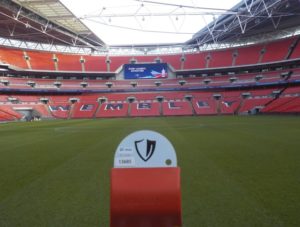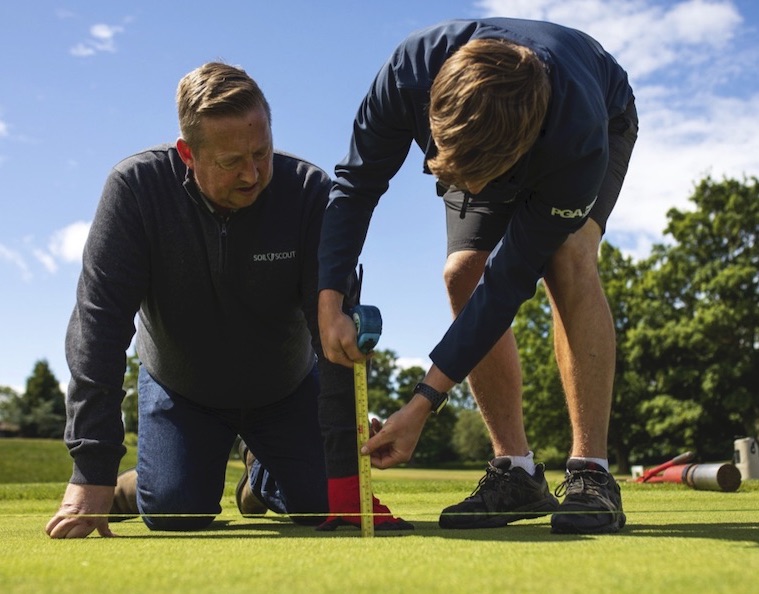By Adam Sedgwick
It seems every article you read these days begins with a somber announcement about the latest sector of society to feel the impacts of COVID-19. Sports field managers around the world are facing difficult decisions on what expenses they need to cut, and many are facing the possibility of new rounds of layoffs and budget reductions.
Turfgrass is not a commodity where cuts can be made if standards are to be maintained. If things stay as they are, smaller sports field management teams will have to work longer hours just to maintain the standards they have, let alone make improvements.
In exceptional times, it is those willing to try new things that are more likely to find a lasting solution. Sports field managers around the world know they need to understand what’s happening underground if they want to provide a safe, durable, and high-performing surface for players.
As sub-soil conditions can greatly vary from area to area, this usually means using handheld sampling devices to take readings on underground moisture, temperature, and salinity levels. These readings are then used to guide the distribution of resources such as water and fertilizer.
Even so, an understaffed team will find it difficult to consistently take samples from the exact same measuring spots, reducing the consistency of manually collected data. As a result, optimal turf conditions cannot be achieved, water is wasted, and repetitive maintenance activities will increase costs.
Using sub-soil data to gain a true picture

If the problem is logistics, then the solution needs to reverse the flow of information. Instead of driving out to specific locations to sporadically collect sample data, one solution could be to permanently position sub-soil monitoring devices that stream readings from multiple key locations in real-time.
If a reading deviates from normal parameters, the team gets alerted and work can be prioritized. This way, sports field management teams will always have up-to-date knowledge of their fields’ underground moisture and salinity levels, as well as the temperature needed to support optimal conditions across all soil variations. With guesswork out of the way, field managers can smartly allocate resources, cut costs, and spend less time on redundant work.
Old problems, new data-driven solutions
Water consumption is a sensitive issue in many markets, and “too much is better than not enough” is not good enough anymore. Field managers who have a detailed view of the in-field variation of their fields can accurately irrigate exactly where needed according to live current levels. Optimal irrigation helps reduce the risk of compaction and has positive knock-on effects for soil aeration.
Over irrigation can also lead to increased salinity levels, making it more challenging for plants to take up moisture. Sub-soil salinity data provides the opportunity to proactively alleviate this potential issue. More precise irrigation will, in turn, lead to reduced fertilizer leaching by preventing overwatering. Real-time soil temperature data will also help sports field managers decide when to best apply fertilizer to ensure better plant uptake.
Ensuring consistent playing surfaces is challenging when the soil’s growth potential and current conditions are unknown. When data is streamed in real-time, proactive agronomic turf improvement can be achieved as predictions can be made for plant nutrient and moisture requirements. This will also help reduce disease incidence as peak turf disease activity can be forecasted.
Low-cut, fine-turf areas walk a fine line between pristine quality and breeding grounds for black thatch. Saturated soils with low oxygen levels are the culprits, so accurate aeration and topdressing regimes are essential. Permanently positioned underground soil monitoring devices will allow sports field managers to ensure their surfaces are supported by optimal sub-soil conditions.
Real-time data also allows you to improve work efficiency in maintenance, reduce labor costs, finish those tasks that never get done, and devote more time to proactive turf development. This sub-soil data can also automate irrigation and sub-surface air systems, thus providing more accurate and timely usage and potential labor-saving benefits. This information – combined with other sub-soil monitoring information – leads to an evidence-based approach to management that can be used to justify the applications of costly resources.
Underground soil sensors can also lead to reduced energy consumption. By optimizing irrigation, you can reduce pumping time, and consume less energy. Better management practices can reduce the number of above surface operations, including mowing, aeration, and the application of fertilizers and pesticides.
Data-driven sports field management is a real option for those looking to adapt to today’s world. Yet it is not a compromise. Tighter conditions tend to create efficiency improvements that can have long-lasting benefits. For instance, a sports field manager who has collected several years of historical data will have a clearer view of overall trends and the tendencies of each area’s soils. Instead of reacting to changes, the field manager will be able to proactively work toward even greater efficiencies and improvements that will compound with each new year.
Adam Sedgwick is VP of global sales at Soil Scout. From turf and amenity to precision farming, machine control, machine automation and GPS, Sedgwick has spent his career at the forefront of agricultural technology and processes.


